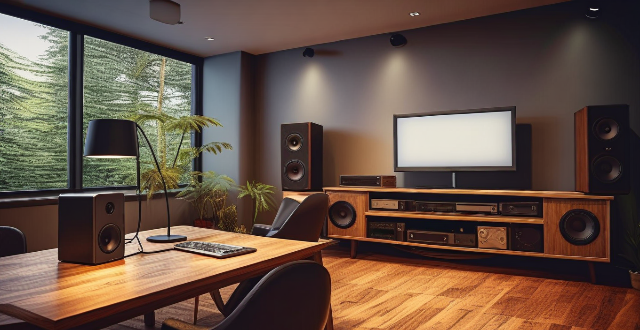The article compares the resolution of phone projectors and regular projectors, highlighting the differences in resolution, viewing area, and brightness. Phone projectors typically have lower resolutions, limited viewing areas, and compromise on brightness due to their compact size and portability. In contrast, regular projectors offer higher resolutions, wider viewing areas, and brighter images, making them suitable for professional use. Factors such as display technology, native vs. supported resolution, and aspect ratio can affect the resolution of a projector.

Comparison of Resolution between Phone Projector and Regular Projector
Introduction
Phone projectors have become increasingly popular in recent years, allowing users to project content from their smartphones onto a larger screen. However, the resolution of phone projectors is often compared to regular projectors. In this article, we will discuss the differences in resolution between phone projectors and regular projectors.
Resolution of Phone Projectors
- Lower Resolution: Phone projectors typically have lower resolutions compared to regular projectors. This is because they are designed to be compact and portable, which limits the space available for high-resolution components.
- Limited Viewing Area: Due to their smaller size, phone projectors have a limited viewing area. This means that the image may appear blurry or distorted when viewed from certain angles.
- Compromise on Brightness: To achieve a smaller form factor, phone projectors often compromise on brightness. As a result, the image may not be as bright or vibrant as what you would see on a regular projector.
Resolution of Regular Projectors
- Higher Resolution: Regular projectors typically have higher resolutions than phone projectors. This is because they are designed for professional use and require higher image quality.
- Wider Viewing Area: Regular projectors have a wider viewing area, allowing multiple people to view the projected image without any distortion.
- Brighter Image: Regular projectors are designed to produce brighter images, making them suitable for use in well-lit environments.
Factors Affecting Resolution
- Display Technology: The type of display technology used in a projector can affect its resolution. For example, DLP (Digital Light Processing) projectors generally have higher resolutions than LCD (Liquid Crystal Display) projectors.
- Native vs. Supported Resolution: It is important to differentiate between native and supported resolution. Native resolution refers to the actual number of pixels that the projector can display, while supported resolution refers to the maximum resolution that the projector can handle. A projector with a higher supported resolution may not necessarily have a higher native resolution.
- Aspect Ratio: The aspect ratio of a projector can also affect its resolution. Common aspect ratios include 4:3 (standard definition) and 16:9 (widescreen). Projectors with different aspect ratios may have different resolutions.
Conclusion
In conclusion, phone projectors typically have lower resolutions compared to regular projectors due to their compact size and portability. However, regular projectors offer higher resolutions, wider viewing areas, and brighter images, making them more suitable for professional use. When choosing a projector, it is important to consider factors such as display technology, native vs. supported resolution, and aspect ratio to ensure that you select the appropriate device for your needs.